It’s been quite the year. Twelve months ago we had just found out that we were expecting our first child. Fast foward to today, and our daughter Fiona is four months old, is a giggling machine, and already has her two bottom teeth! I guess that’s what happens when Mom’s a dentist and Dad’s a food blogger. So in honor of a truly unforgettable year, a special drink is in order. Thank you so much for stopping by the site this year, for all your kind words, and for giving our recipes a try!!
Kir royales are a classic way to ring in the new year, but as always, I had to put my quirky spin on things. So instead of the typical champagne with a splash of crème de cassis (blackcurrant liqueur), I created crème de cassis caviar pearls!! This process of spherification, or turning a liquid into solid spheres, can be easily done using chemicals such as sodium alginate. However, I decided to keep it simple and use gelatin sheets – much more accessible, and frankly, less intimidating.
Begin by blooming your gelatin sheets by soaking them in cold water for 5-10 minutes. This will soften the gelatin so that it will easily dissolve.
Once fully bloomed, your gelatin sheets will be soft and slimy, with a wet seaweed-like texture. Use your hand to squeeze the sheets to remove any extra water. Next, place the gelatin in a small saucepan with the crème de cassis and heat over medium heat, stirring, just until the point that the gelatin completely dissolves. Remove from heat and transfer into a squeeze bottle. The squeeze bottle that you use should have a very small opening at the tip, as you will need to make tiny droplets in order to create the pearls. Let the mixture sit and cool, but keep an eye on it. If the mixture cools all the way to room temperature, it will completely solidify and you will have jello. What you’re looking for is a thick, soupy consistency. Thicker than juice, but thinner than jam. Don’t worry, if you miss the right point and it gets too thick, just reheat it to turn it back into a liquid. Meanwhile, fill a freezer safe bowl with canola oil and place in the freezer. The goal is to get the oil as cold as possible without solidifying.
Once your oil is extremely cold, but still liquid, and your crème de cassis and gelatin mixture has thickened to the right consistency, you’re ready to make the pearls. Carefully squeeze the gelatin mixture from the bottle so that it creates droplets into the oil. The temperature and thickness of the oil will mold each of your droplets into perfectly round pearls that will slowly sink to the bottom of the bowl. If your mixture is too thick then you won’t get droplets, and therefore no nice spheres.
As you see, there’s some cool science going on here, but to achieve the desired effect it’s really important that you have very cold oil. I tried several different iterations controlling for different variables. For example, placing the oil vessel in an ice bath to keep it cold. While this didn’t hurt, it still wasn’t a substitute for chilling the oil to just above it’s freezing point.
Fill the oil with as many pearls as you’d like. For small pearls make single droplets into the oil. For larger pearls simply drip 2 or 3 droplets on top of each other, and the oil will merge them into one single large pearl as it floats to the bottom. Next, you’ll need to strain the pearls out of the oil by pouring everything through a fine mesh strainer. If you’d like, you can then repeat the process of making more pearls in oil.
After straining I submerged the strainer into an ice water bath to a) rinse off the oil, and b) keep them cold and make sure they were solidified. Once I saw the pearls had solidified I ended up removing them from the ice water and actually ran them under cold tap water to really rinse off any extra oil.
And there you have it. Congratulations, your very own pearls of crème de cassis are ready for a cocktail!!
I should say that the pearls can be kept submerged in the cold oil in the refrigerator until you’re ready to strain, rinse, and serve.
There are a couple ways you might think about serving this to your guests. One is to simply add a spoonful of pearls into each chilled glass of champagne (as shown here) to create a pearly kir royale – that last sip bursting with blackcurrant flavor. Or, perhaps you encourage your guests to take a spoonful of pearls and then a sip of the champagne, separately, so as to curate a more deconstructed effect. Either way, you’ll have a fun new party trick to celebrate the new year. Cheers!!
KIR ROYALE PEARLS
Ingredients:
- 4 oz crème de cassis
- 2 gelatin sheets
- cold canola oil
Directions:
- Fill a freezer safe bowl with canola oil and place in the freezer. The goal is to get the oil as cold as possible without solidifying.
- Bloom the gelatin sheets by soaking them in cold water for 5-10 minutes.
- Use your hand to squeeze the sheets to remove any extra water.
- Place the gelatin in a small saucepan with the crème de cassis and heat over medium heat, stirring, until the gelatin completely dissolves.
- Remove from heat and transfer into a squeeze bottle with very small opening at the tip.
- Let the mixture cool until it reaches a thick, soupy consistency.
- Once your oil is extremely cold, but not frozen, carefully squeeze the gelatin mixture from the bottle so that it creates droplets into the oil. For small pearls make single droplets into the oil. For larger pearls simply drip 2 or 3 droplets on top of each other.
- The pearls can be kept submerged in the cold oil in the refrigerator until you’re ready to strain, rinse, and serve.
- Strain the pearls out of the oil by pouring everything through a fine mesh strainer. If you’d like, you can then repeat the process of making more pearls in oil.
- Submerge the strainer into an ice water bath to rinse off the oil and make sure the pearls have solidified.
- Run them under cold tap water to really rinse off any extra oil.
- Add a spoonful of pearls into a glass of chilled champagne, or take a spoonful of pearls and then a sip of the champagne, separately, so as to curate a more deconstructed effect.
(images by HonestlyYUM)

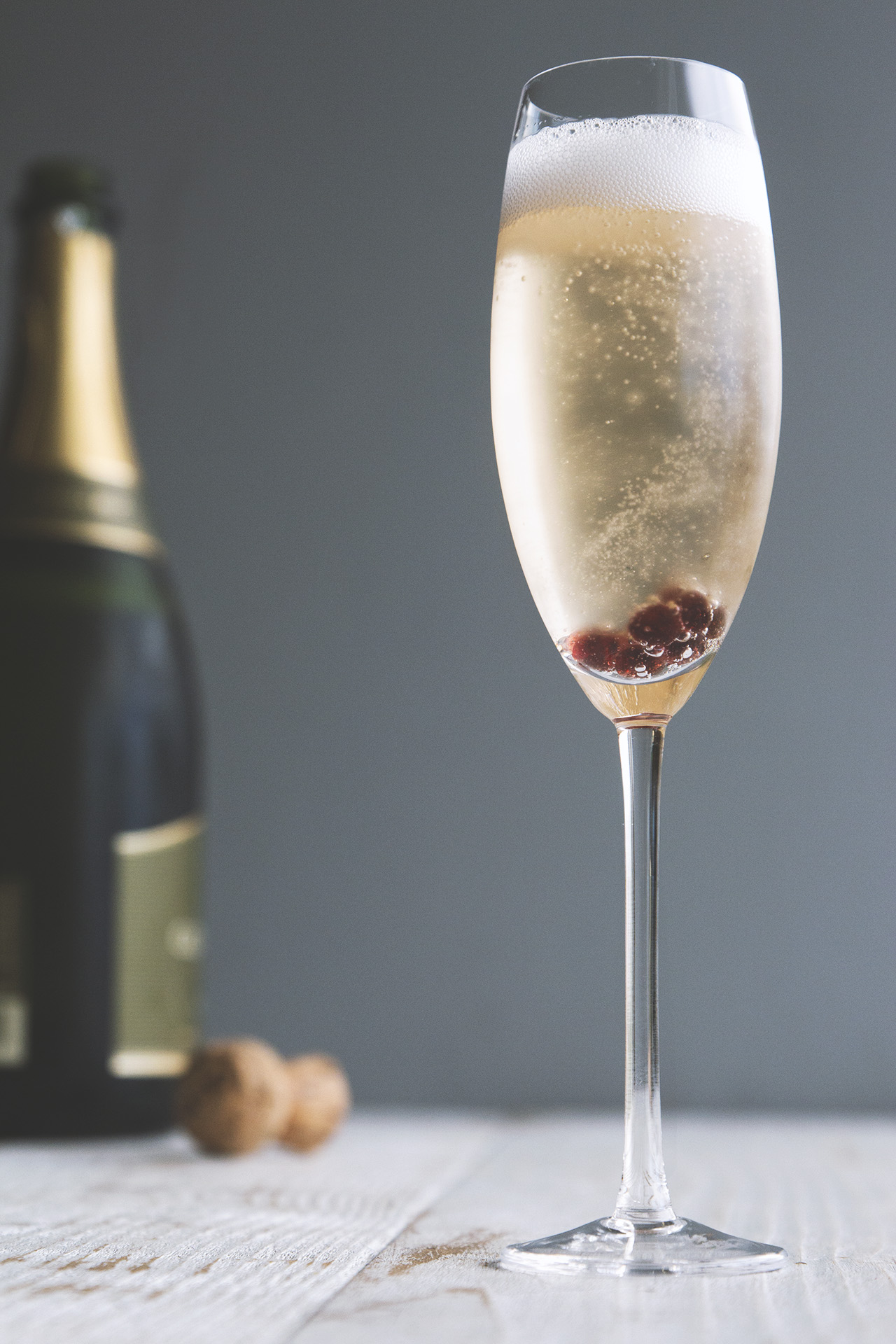
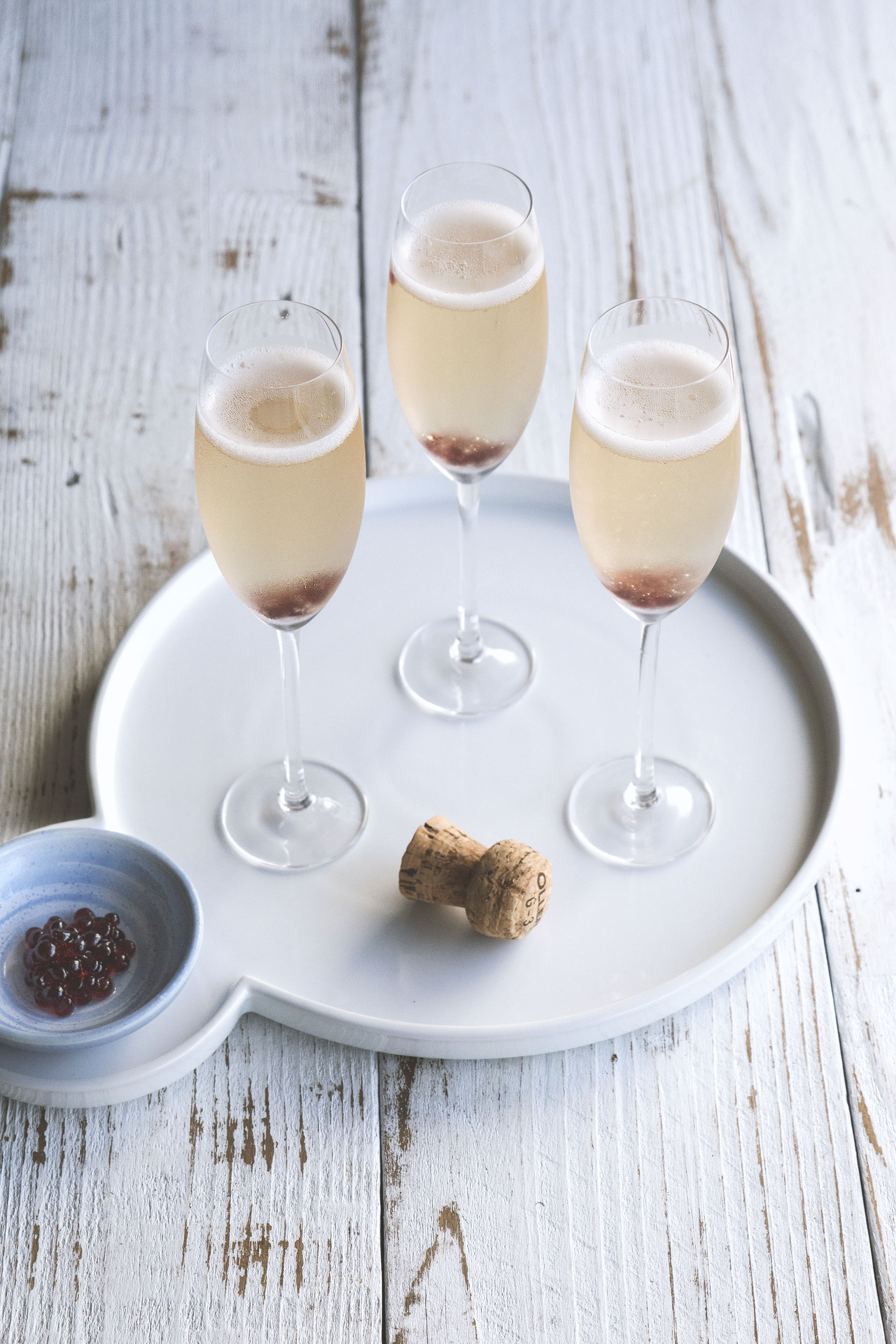

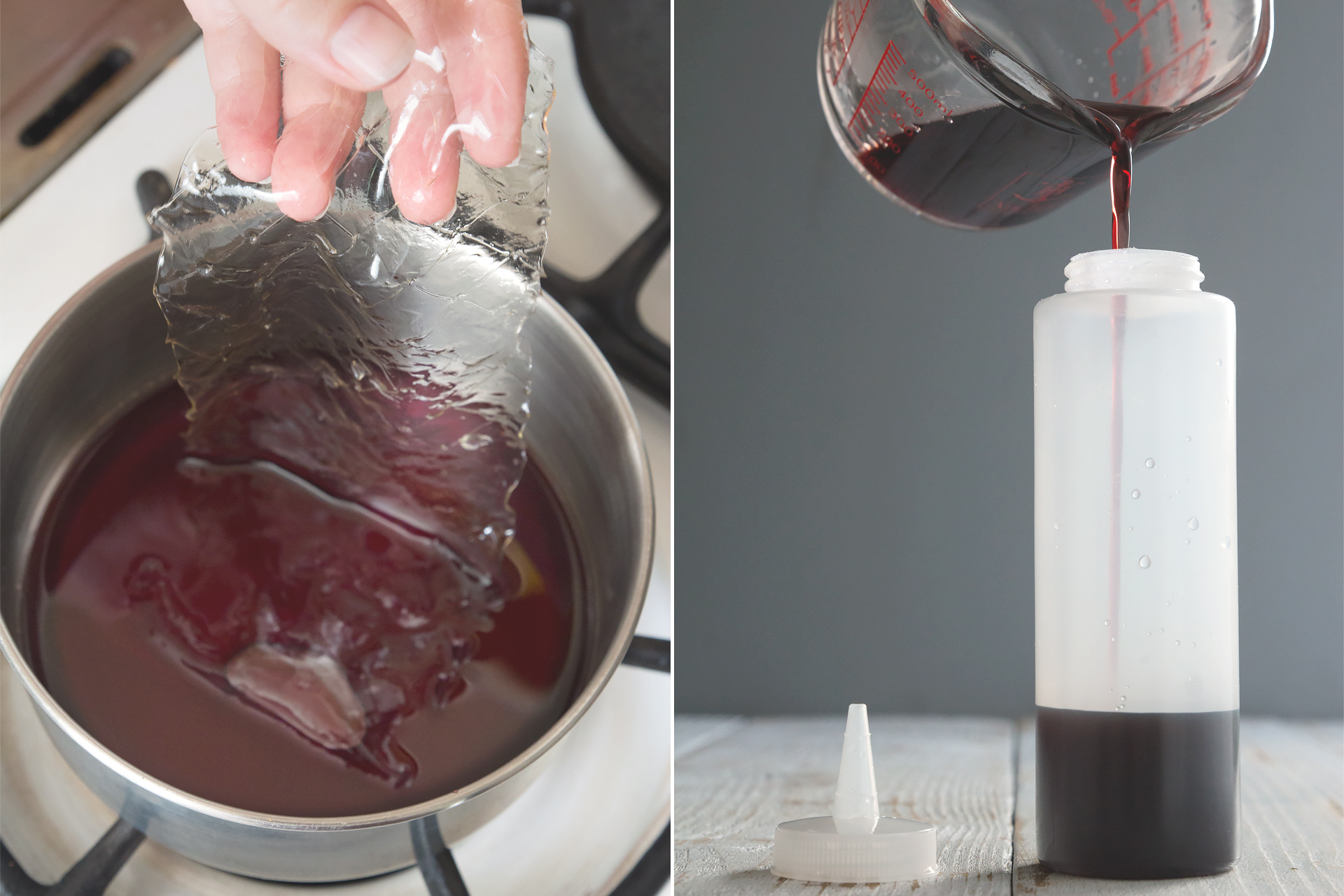
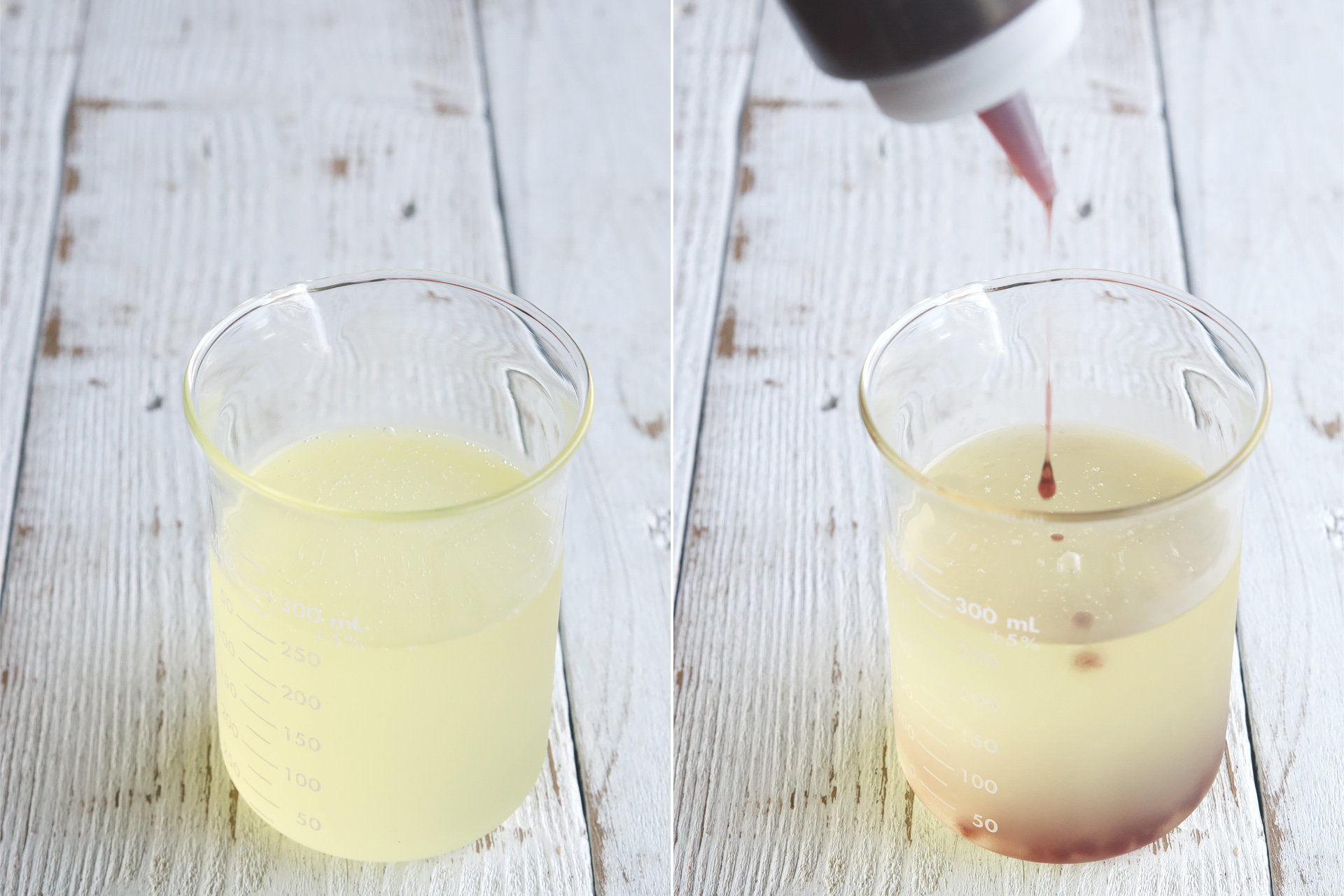
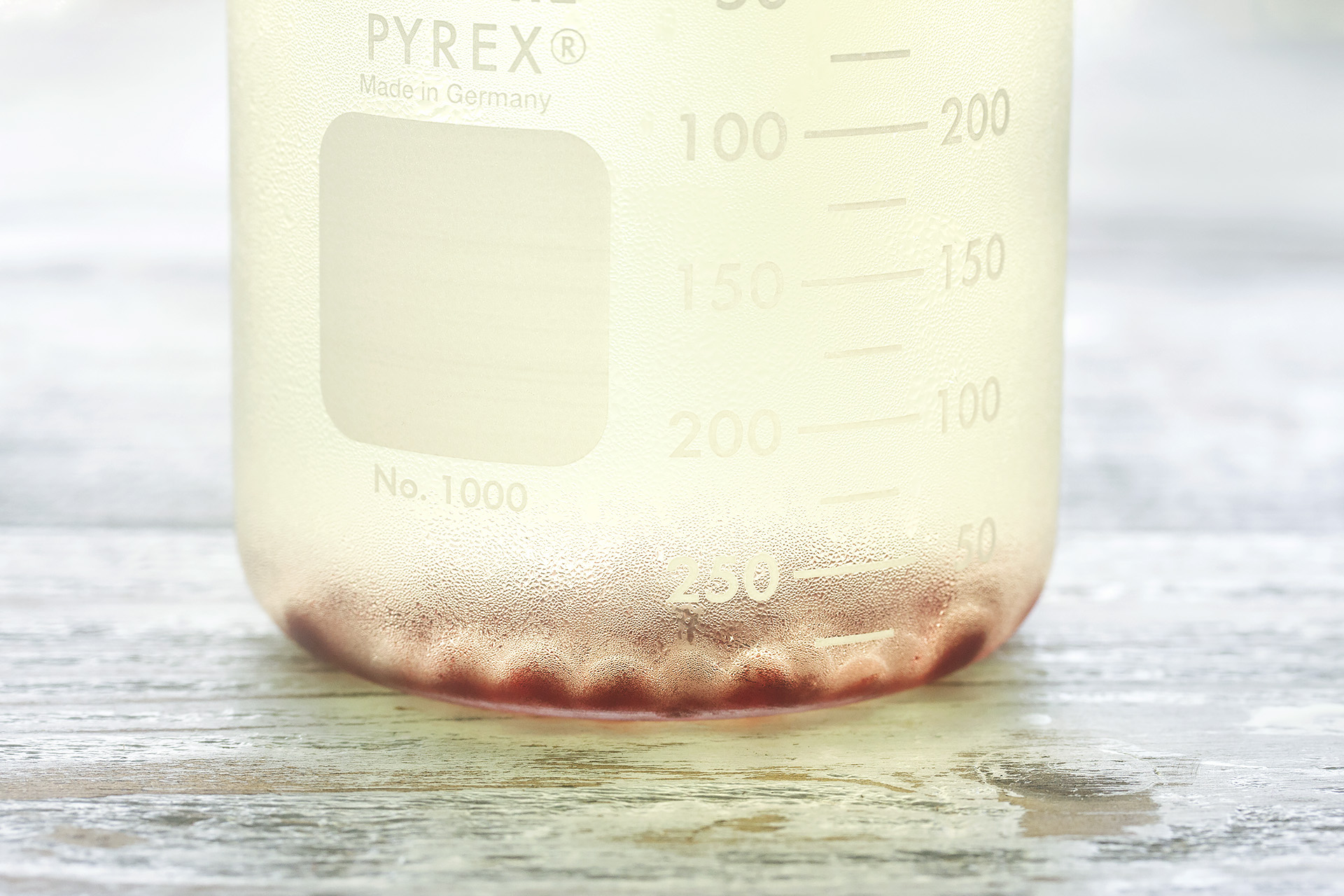


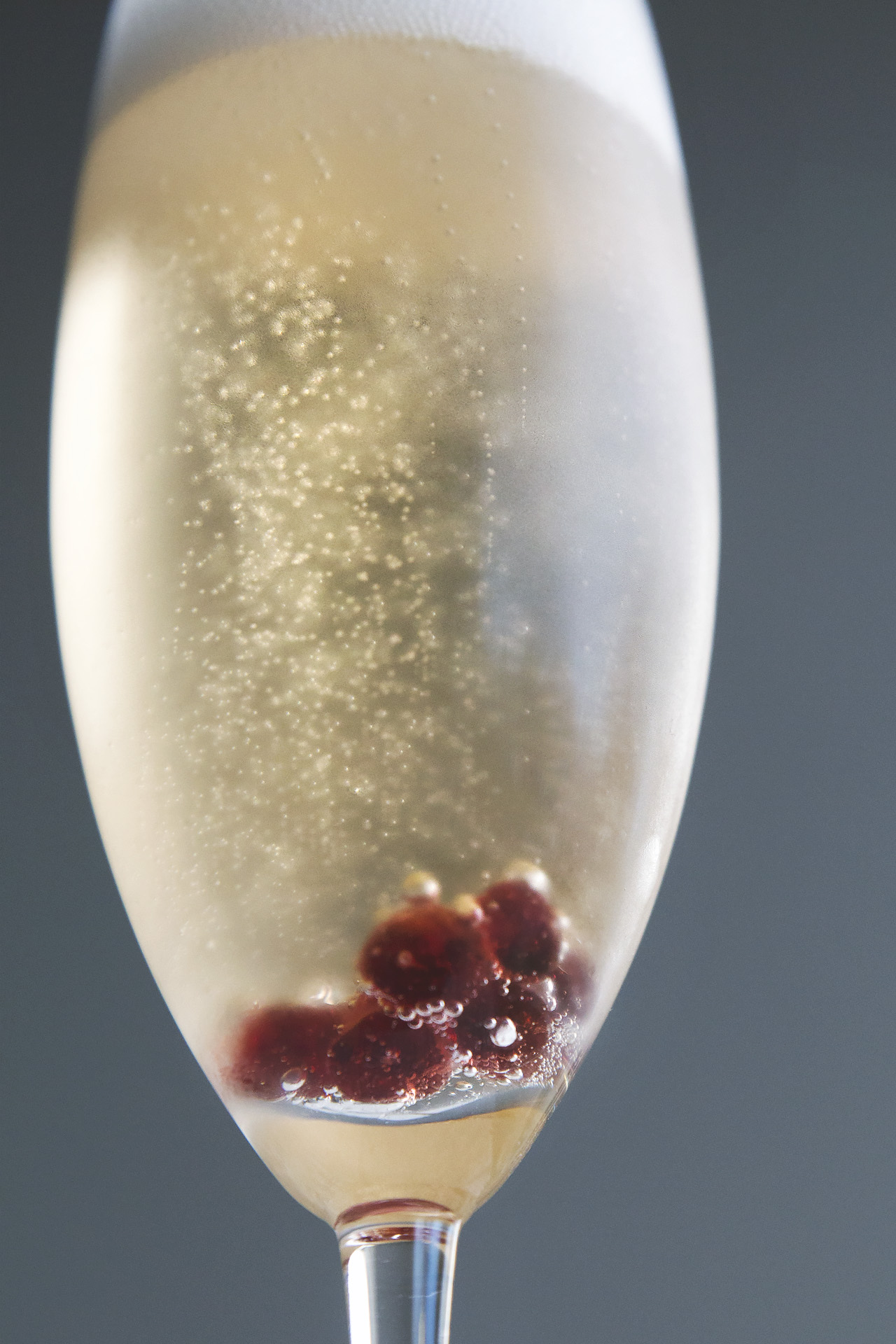
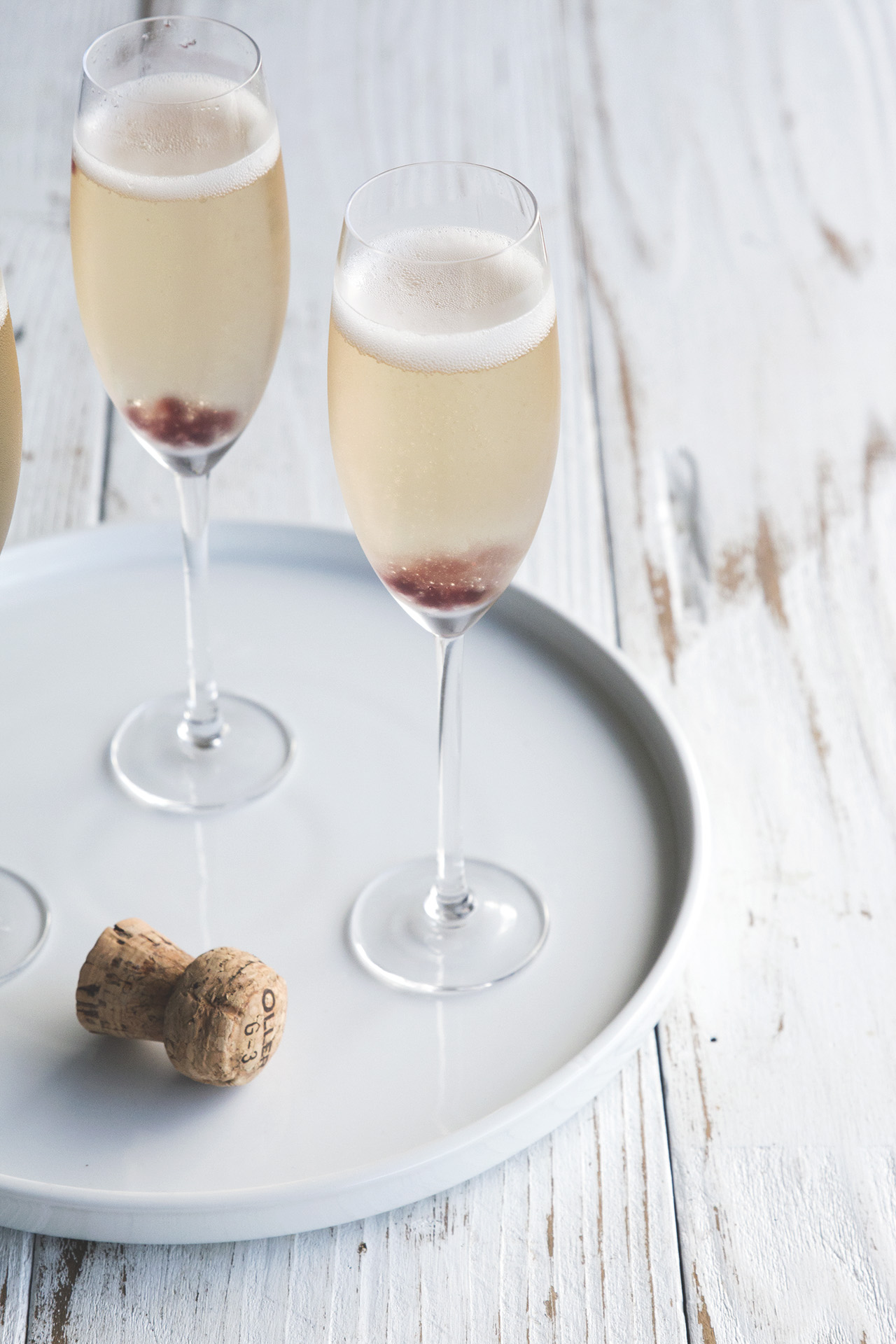
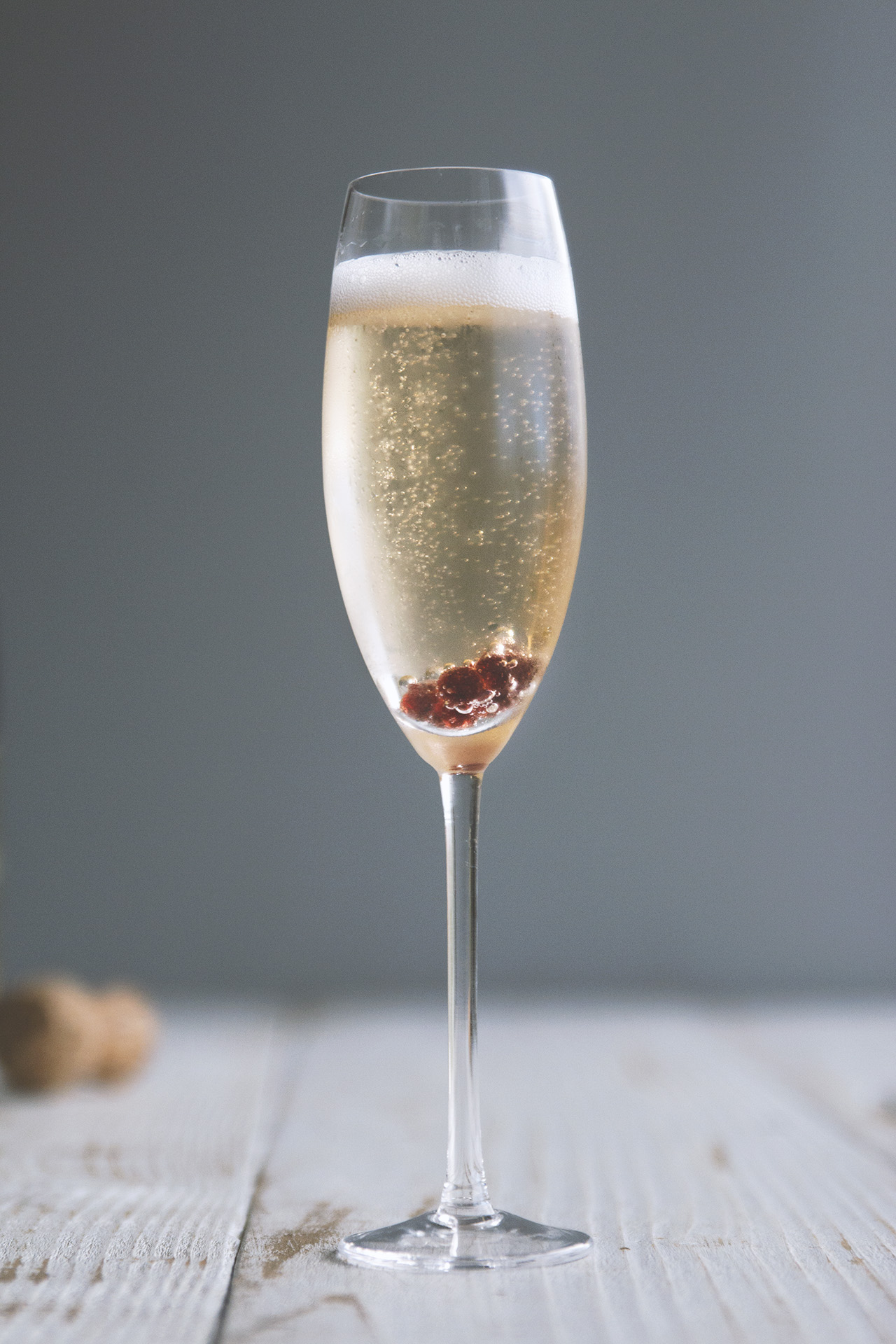
What is the conversation of powder gelatine was to sheets? Thanks!
I understand that these will keep for a while in canola oil, but should I still make them the same day or can I make them ahead? Thanks, it looks lovely!
How beautiful! I’ll be filing this away for next year when I’m not super pregnant 🙂 And I totally get how you are feeling…I’m not sure how I ended up with a 3 year old and just a week away from having another little munchkin! Happy New Year to you!
Absolutely gorgeous, the perfect way to ring in the New Year!
Those pearls are TOO cool!!! Happy New Year!!!
This is such a creative recipe! What a perfect drink to toast the New Year with!
Seriously, what a year you have had! Congrats and a happy New Year to you and your family! 🙂
Love this pretty, festive drink!
I love it! It’s like champagne boba! Also what I really find very exciting is the process that you went through to make this, and the explorative process of developing a sensitivity to the materials you are working with to control the process of “spherification.” I had no idea this was a way to do it. I could imagine this also being an incredibly fun experience, learning to making different kinds of pearls and then exploring different ways to bring them together with the drink as a whole.
These are so elegant! Perfect for New Year’s. Pinned!
This is so cool, and looks delicious! Thanks for sharing the recipe.